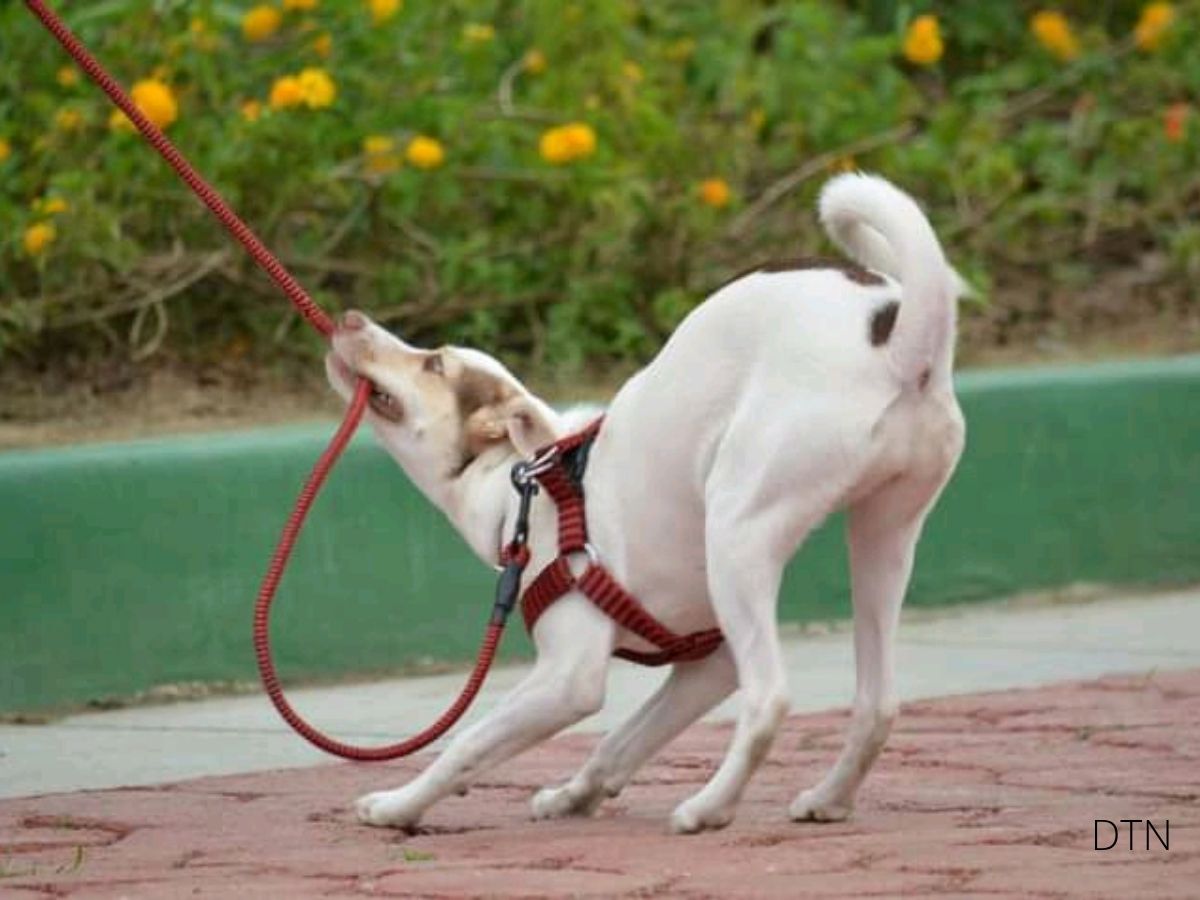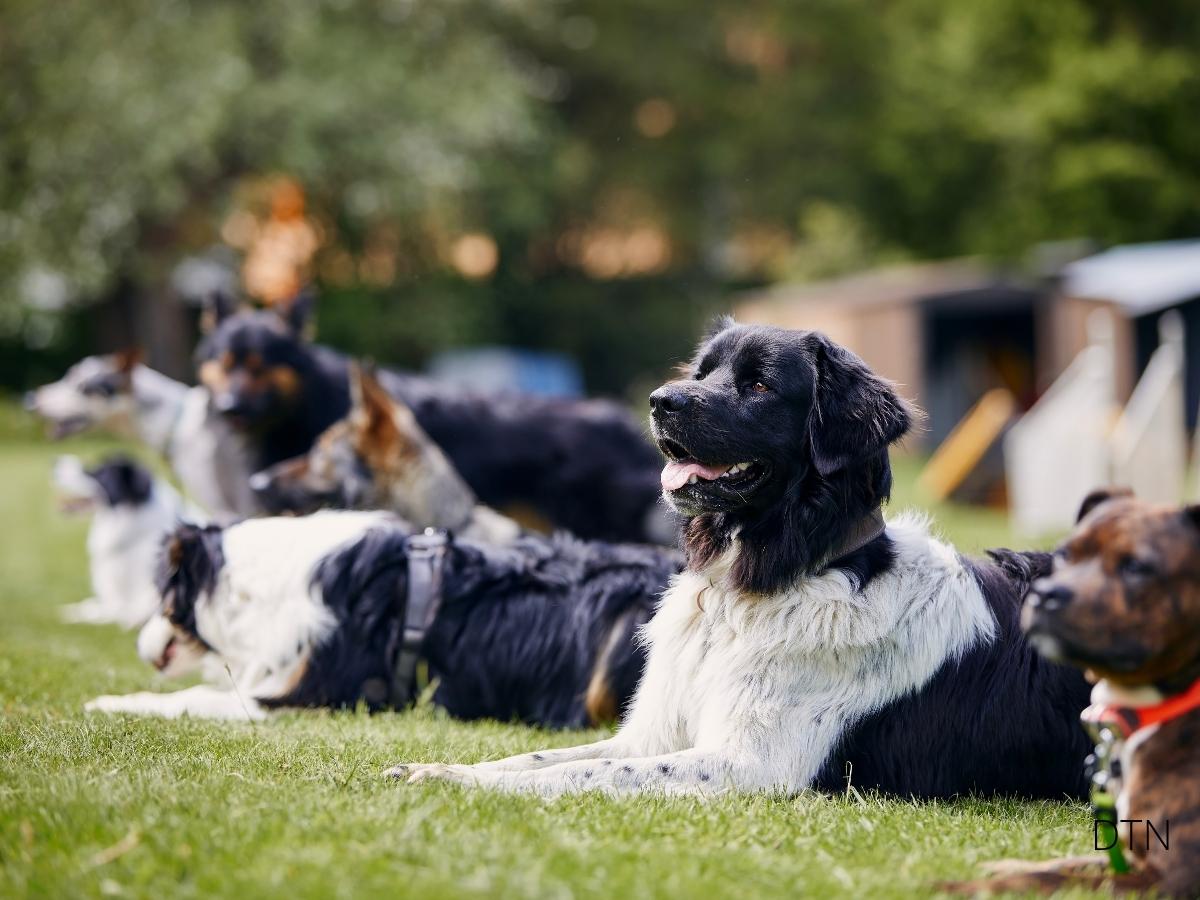Your Dog’s Growl Is Not a Threat—It’s a Conversation
Picture this: your beloved dog growls, and your heart skips a beat. Is this aggression? A warning? Let us guide you through a different perspective—one that might transform how you understand your furry friend forever.
Growling is perhaps the most misunderstood vocalization in canine communication. Traditional training has taught us to suppress or fear this natural behavior. Yet science tells a profoundly different story. Your dog’s growl is not a threat—it’s sophisticated emotional expression, a self-regulation tool, and a conflict-prevention strategy refined through thousands of years of evolution.
When we learn to truly listen to what our dogs tell us through their growls, we open a doorway to deeper understanding and stronger bonds. This is where the NeuroBond approach begins: recognizing that trust and communication form the foundation of every meaningful relationship between human and dog. 🧡
The Science Behind the Sound: How Growls Communicate Emotion
Acoustic Signatures Tell Different Stories
Your dog’s growls carry distinct acoustic signatures that change based on emotional state. Just as your voice might tremble with anxiety or deepen with confidence, canine vocalizations shift in measurable ways that communicate specific feelings and intentions.
Research reveals that growls vary across three key parameters. Frequency characteristics reflect pitch and tonal quality—lower frequencies often signal serious intent, while higher pitches may indicate uncertainty or playfulness. Duration and temporal patterning describe how long growl pulses last and their rhythm. Growl bouts with shorter, slower pulsing patterns are typically rated as less aggressive and more playful. Modulation and intensity refer to variations in volume and tone, with aggressive growls tending to be louder with wider frequency ranges.
The same dog can produce dramatically different growls depending on social context. Playful growls during tug-of-war feature shorter duration and slower pulsing, accompanied by loose body movements and relaxed facial expressions. Defensive growls signal discomfort and the need for distance, often with stiff posture, pinned ears, and whale eye. Resource-guarding growls represent clear boundary-setting, with the dog positioning over valued items and producing deeper, sustained vocalizations.
Humans Can Hear the Difference
Here’s something remarkable: humans can differentiate between dog growls based on social contexts with above-chance accuracy. Women and individuals with dog experience score significantly higher in categorizing growl types. This ability suggests that cross-species communication may be hardwired into our shared evolutionary history.
The key cue humans use to distinguish contexts is the growling rate—the temporal patterning and rhythm. Your brain processes these patterns differently, allowing you to infer meaning even without formal training. 🧠
What Happens Inside: The Emotional and Physical Reality
The Brain’s Stress Response System
When your dog growls, their entire body participates in a complex physiological response. At the heart of emotional regulation lies the Hypothalamic-Pituitary-Adrenocortical (HPA) axis—a neuroendocrine system governing stress response and emotional expression.
When your dog perceives a stressor, the HPA axis activates, triggering cortisol release and heightening sensory awareness. Growling emerges as part of this response, serving as both external communication and internal emotional regulation. Dog domestication involved modifications that altered HPA axis interactions with serotonin systems, allowing our companions to develop more flexible, communicative stress responses than their wolf ancestors.
Two fundamental dimensions shape every growl: emotional valence (positive versus negative) and arousal level (intensity). A fear-based growl combines negative valence with high arousal—your dog feels threatened and intensely stressed. Boundary-setting behavior shows negative valence with moderate arousal—mildly protective but not panicked. Playful growling features positive valence with high arousal—excitement and engagement without actual threat.
Understanding these dimensions helps us recognize that growling from anxiety, pain, frustration, and fear represents legitimate emotional distress requiring compassionate response, not punishment. This embodies the Soul Recall concept—recognizing how deeply memory and emotion intertwine in behavior. 🧡
The Dangerous Truth About Punishing Growls
Why Suppression Creates Silent Biters
This carries perhaps the most critical welfare message: punishing a dog for growling is profoundly dangerous. Yet this misguided practice remains common, rooted in outdated dominance theories.
Punishment-based training methods consistently produce devastating outcomes: increased aggression, emotional instability, decreased trainability, and significantly reduced welfare. When you understand that a growl functions as an early warning signal—your dog saying “I’m uncomfortable, please help”—the danger becomes clear.
Here’s what happens: A dog who learns that growling results in punishment may suppress this warning entirely. Without the growl to signal escalating distress, the behavioral sequence bypasses normal warnings. The result? “Silent bites”—aggression that appears sudden but actually represents removed warning signs through learned suppression.
Punishment doesn’t address the underlying emotional state—the fear, pain, or discomfort that motivated the growl. It simply removes the dog’s ability to communicate safely. The emotion remains; only the warning vanishes.
The Power of Positive Acknowledgment
The alternative approach produces dramatically different outcomes. This is where the Invisible Leash philosophy reminds us that awareness, not tension, guides the path forward.
Reward-based training demonstrates lower problematic behaviors, increased attachment, higher trainability, and significantly improved welfare. When applied to vocal communication, positive reinforcement teaches dogs that their voice matters and will be heard.
If your dog growls to signal discomfort and you respond by acknowledging the communication, identifying the trigger, creating distance, and providing reassurance, your dog learns that vocal communication is effective and valued. Trust deepens, and relationships strengthen. A friendly voice during potentially stressful moments supports positive emotional responses, teaching dogs that communication serves them well.
Busting the Dominance Myth
The Truth About Alpha Theory
Perhaps no single misconception has caused more harm than “dominance theory”—the outdated belief that dogs constantly try to assert dominance and humans must establish themselves as “alpha” through forceful control.
Let’s be clear: Modern behavioral science has thoroughly debunked dominance theory as it applies to dog-human relationships. Domestication fundamentally altered canine cognitive abilities to facilitate cooperative interaction with humans rather than hierarchical competition.
Under dominance theory’s influence, growls are misinterpreted as challenges to authority rather than legitimate discomfort communication. This leads to punitive responses that suppress crucial warning signals. The reality? Aggression stems from illness, anxiety, pain, frustration, and fear—not desires for dominance.
A dog growling when hugged isn’t “trying to dominate”—they’re communicating discomfort with restraint. A dog growling during meals isn’t “alpha posturing”—they’re expressing resource-guarding rooted in evolutionary survival mechanisms.
Dogs are how people would be if the important stuff is all that mattered to us.
– Ashly Lorenzana

Practical Responses to Different Growl Types
Resource Guarding at Mealtime
You approach your dog’s food bowl, and they produce a low, sustained growl with stiff posture.
What’s happening: Natural resource-guarding—fear of losing something valuable, not dominance.
What NOT to do: Punish the growl, force them away, or physically confront them.
What TO do: Stop approaching immediately, toss high-value treats near the bowl from a distance, systematically desensitize by teaching your approach predicts good things, and consult a reward-based trainer for structured protocols.
Playful Growling During Games
During tug-of-war, your dog produces rapid, choppy growls with loose body language and wagging tail.
What’s happening: Joyful arousal during play—positive emotional expression.
What NOT to do: Panic and end the game, teaching vocal expression ruins fun.
What TO do: Continue playing if body language remains loose, monitor arousal levels, teach “drop it” and “take it” for controlled play, and celebrate enthusiastic engagement. 😄
Fear-Based Defensive Growling
During nail trimming, your dog produces tense growls with lowered posture, pinned ears, and trembling.
What’s happening: Significant fear requiring defensive warning—”I’m very uncomfortable, I need this to stop.”
What NOT to do: Force continuation, punish the growl, or ignore the communication.
What TO do: Stop immediately if safe, create distance, allow retreat, work with fear-free professionals, implement systematic desensitization before next exposure, and respond compassionately to build trust.
When to Seek Professional Help
While many situations can be managed through education and environmental modification, some circumstances require expertise. Consider professional support when growling escalates in frequency or intensity, biting has occurred, you feel genuinely afraid, children are present with safety concerns, or previous interventions haven’t helped.
Look for Certified Professional Dog Trainers (CPDT), Certified Applied Animal Behaviorists (CAAB), or Veterinary Behaviorists using reward-based, force-free methodologies. Avoid professionals recommending shock collars, dominance language, or guaranteeing quick fixes.
Creating a Communication-Friendly Home
A home supporting healthy vocal communication requires both physical setup and emotional atmosphere. Designate inviolate safe zones where your dog can retreat without disturbance. Distribute resources (water, resting spots, toys) to reduce competition. Use strategic furniture placement to manage visual triggers. Maintain predictable routines that help dogs feel secure.
Cultivate calm energy—your emotional regulation profoundly affects your dog’s stress levels. Use consistent cues and clear boundaries. Create a household culture where communications are acknowledged, not punished. Ensure all family members understand how to interpret and respond appropriately.
The Gift of Understanding
Reframing Growls as Valuable Information
When your dog growls, they’re trusting you with crucial information about their internal state. They’re offering the opportunity to help, to intervene before escalation, to understand their needs and boundaries. This communication represents faith that you’ll listen rather than punish, understand rather than dominate.
Imagine if humans lost the ability to say “no,” “stop,” or “I need space.” Relationships would be characterized by constant boundary violations and escalating conflicts. This is precisely what we risk when we suppress growling in dogs.
By reframing growls as valuable communication—gifts of information enabling safe, trusting relationships—we honor our dogs’ emotional lives and demonstrate the cross-species empathy that makes human-dog bonds remarkable.
Where Science Meets Soul
Throughout this exploration, we’ve woven together rigorous scientific understanding with emotional awareness. This integration represents the heart of the Zoeta Dogsoul philosophy—recognizing dogs as sophisticated emotional beings with their own communication systems, evolutionary adaptations, and individual personalities.
The NeuroBond approach recognizes that trust and shared understanding form the foundation of all meaningful learning. When we understand the neurobiological systems generating growling, we develop compassion for emotional expression. When we recognize acoustic sophistication, we appreciate the communication complexity we’re privileged to access.
The Invisible Leash represents the awareness guiding your relationship—your dog aware of your presence, you aware of their emotional state. This reciprocal awareness creates harmony far more reliable than any physical restraint or dominance display could achieve. When your dog growls, this awareness allows you to hear the message beneath the sound and respond in ways that strengthen your bond. 🧡
Your Next Steps
If you’re committed to better understanding your vocal dog, start by observing and documenting vocalizations, noting contexts and triggers. Commit to no longer punishing growls starting today. Educate household members about appropriate responses. Identify situations where growling occurs regularly and develop management plans.
Continue deepening your understanding of canine cognition and communication. Share accurate information to combat dominance-theory myths. Model appropriate responses for others in your community. Celebrate progress, recognizing that relationship-building takes time. Remain committed to trust-based connection.
That balance between science and soul—that’s the essence of Zoeta Dogsoul. 🧠🧡
Your dog is speaking. The question is: Are you truly listening?






